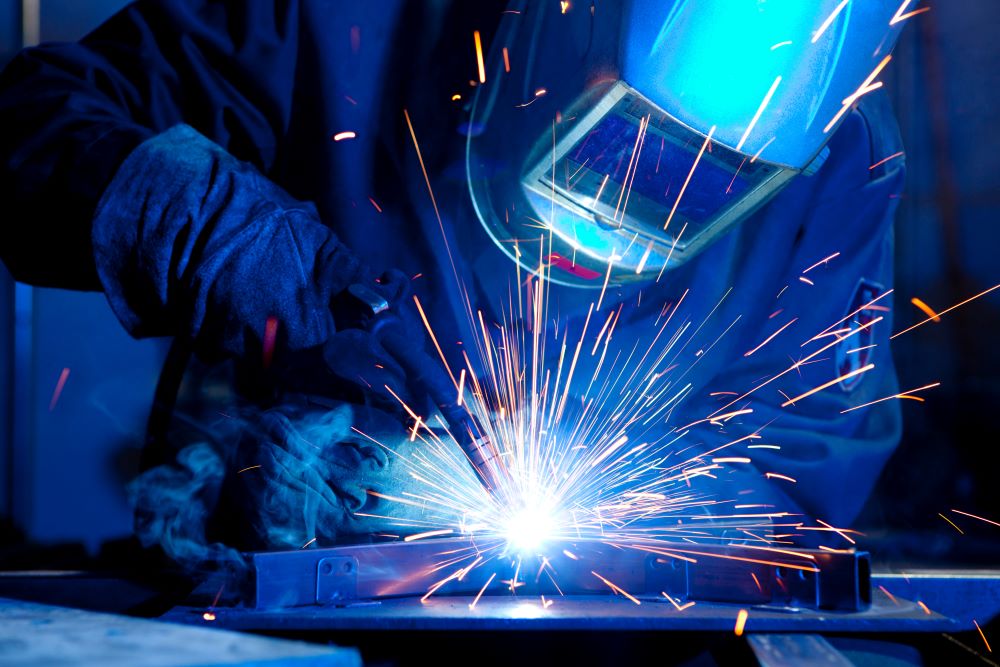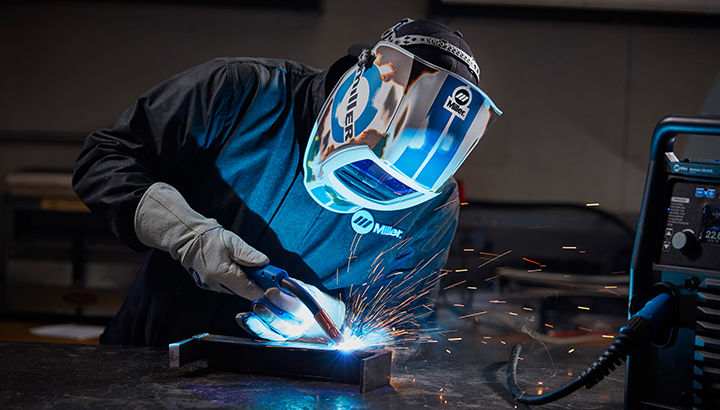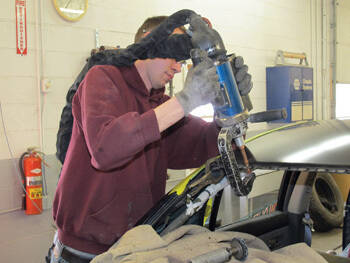Typical Welding Repair Issues and How to Address Them Efficiently
Welding repair work often come across an array of issues that can threaten the integrity of the final item. Typical problems consist of poor infiltration, porosity, and imbalance, to name a few. Each flaw offers one-of-a-kind obstacles that call for details techniques for resolution. Understanding these issues is essential for welders intending to boost their skills and end results. This conversation will certainly discover these common welding repair concerns and reliable methods to address them.
Insufficient Infiltration
Poor penetration takes place when the weld steel fails to fully fuse with the base material, causing weak joints and potential structural failings. This problem often stems from inadequate heat input, inaccurate electrode angle, or improper welding rate. Welders might run into insufficient infiltration as a result of a miscalculation of the essential parameters for a certain material density or type. In addition, contamination on the base material's surface can prevent reliable bonding, intensifying the problem. To address insufficient penetration, welders ought to guarantee suitable settings on their tools and maintain a tidy job surface. Routine evaluation of welds is suggested to determine any type of shortages early, enabling prompt corrections and the prevention of compromised architectural integrity in welded assemblies.
Porosity
Porosity is a common flaw in welded joints that materializes as little gas bubbles entraped within the weld steel. This problem can jeopardize the integrity of the weld, leading to lowered strength and potential failing under stress. Belgrade. Porosity typically occurs from contamination, dampness, or inappropriate welding methods, which enable gases to leave into the liquified weld swimming pool. To deal with porosity, welders need to guarantee proper surface prep work, preserve a tidy workplace, and use suitable welding specifications. Furthermore, choosing the right filler material and shielding gas can mitigate gas entrapment. Regular evaluation and screening of welds can help determine porosity early, guaranteeing timely corrective actions are taken, consequently preserving the high quality and reliability of the welded structure
Imbalance
Misalignment in welding can develop from various variables, consisting of inappropriate configuration and thermal growth. Recognizing the source is crucial for reliable resolution. Several correction methods are available to realign components and assure structural integrity.
Reasons for Misalignment
Welding imbalance frequently originates from a range of underlying concerns that can endanger architectural integrity. One key cause is improper fit-up of components before welding, which can bring about spaces and uneven surfaces. Variations in thermal development throughout the welding procedure can additionally cause distortion, specifically if the products being signed up with have various coefficients of growth. Additionally, insufficient fixturing and clamping might stop working to hold parts safely in location, resulting in motion throughout welding. Poorly kept equipment, including welding makers and devices, may present inconsistencies in the weld grain, further adding to imbalance. Operator mistake, stemming from insufficient training or experience, can also play a considerable role in producing misaligned welds.

Improvement Methods Available
Addressing misalignment efficiently requires a mix of restorative strategies customized to the specific problems handy. One typical technique is the usage of jigs or components to hold components in the proper position during welding, making certain regular alignment. In addition, pre-heating the materials can help in reducing distortion and enhance fit-up. For significant misalignment, mechanical adjustment methods, such as making use of hydraulic jacks or clamps, can be used to remedy the position before welding. Post-weld heat treatment may additionally be necessary to relieve stress and anxieties brought on by imbalance. Cautious assessment and modification throughout the configuration stage can protect against imbalance problems from becoming substantial issues, promoting a smoother welding process and improving total structural honesty.
Distortion
Distortion is a common challenge in welding that can develop from different variables, consisting of irregular cooling and heating. Understanding the sources of distortion is important for applying reliable avoidance strategies. Resolving this concern not just boosts structural stability but additionally boosts the total high quality of the weld.
Sources of Distortion
When subjected to the intense warmth of welding, materials frequently undergo modifications that can result in distortion. This phenomenon primarily emerges from thermal growth and tightening throughout the welding process. As the weld area warms up, the product broadens; upon air conditioning, it acquires, which can create internal stress and anxieties. Additionally, irregular home heating throughout a work surface can intensify these stress and anxieties, causing warping or bending. The kind of product additionally plays a considerable function; steels with varying thermal conductivity and coefficients of expansion may react differently, bring about unforeseeable distortions. Poor joint layout and insufficient fixturing can contribute to imbalance throughout welding, enhancing the chance of distortion. Comprehending these causes is vital for effective welding fixing and avoidance methods.
Prevention Techniques
Reliable prevention methods for distortion during welding concentrate on managing heat input and making sure appropriate joint style. Maintaining a regular heat input assists to reduce thermal growth and contraction, which can cause distortion. Making use of techniques such as pre-heating the workpiece can likewise minimize the temperature level gradient, promoting uniform heating. Additionally, selecting appropriate joint designs, such as T-joints or lap joints, can boost stability and decrease tension focus. Executing appropriate fixturing to safeguard the work surfaces in place additionally help in maintaining alignment throughout the welding process. Finally, staggered welding series can distribute warmth much more uniformly, stopping local distortion. By applying these techniques, welders can considerably decrease the probability of distortion and enhance the total quality of their welds.
Splitting
Breaking is an usual problem come across in welding repair work, frequently arising from different aspects such as improper air conditioning rates, material selection, or insufficient joint preparation. The incident of splits can greatly jeopardize the honesty of the weld, causing possible failings throughout operation. To address this concern, welders need to initially analyze the origin, guaranteeing that materials are compatible and suitably chosen for the particular application. In addition, regulating the cooling price throughout the welding process is important; rapid air conditioning can generate tension and result in breaking. Correct joint layout and preparation also contribute to lessening the risk. Implementing these methods can improve weld high quality and durability, inevitably minimizing the likelihood of fracturing in finished weldments.

Insufficient Fusion
A significant problem in welding fixings is incomplete fusion, which occurs when the weld metal does not sufficiently bond with the base product or previous weld passes - Belgrade Fabrication. This defect can result in weak points in the joint, potentially endangering the stability of the bonded framework. Variables contributing to insufficient combination include inadequate warm input, inappropriate welding strategy, and contamination of the surface areas being joined. To address this issue effectively, welders must assure appropriate pre-weld cleansing and surface area preparation, along with adjust their welding specifications to achieve ample infiltration and fusion. Normal assessment throughout the welding procedure can additionally help determine incomplete combination early, permitting for prompt rehabilitative steps to improve the published here total quality of the weld
Overheating
While welding fixings can boost structural honesty, overheating provides a substantial difficulty that can result in material destruction. Excessive warm throughout welding can change the mechanical buildings of steels, causing decreased stamina, boosted brittleness, and bending. This phenomenon is especially vital in high-stress applications where structural integrity is paramount. Recognizing overheating can involve visual inspections for discoloration or distortion, in addition to keeping track of temperature level throughout the welding procedure. To reduce the dangers connected with getting too hot, welders ought to use appropriate methods, such as controlling warmth input, adjusting travel rate, and utilizing ideal filler products. Additionally, applying pre- and post-weld warmth therapies can assist bring back product homes and improve the general top quality of the repair, making certain long-term performance and safety.
Often Asked Questions
What Are the Typical Indicators of a Welding Issue?

Exactly How Can I Examine My Welds for Quality?
To examine welds for high quality, one can use visual evaluations, ultrasonic testing, and radiographic techniques. Each technique assures architectural honesty, determines flaws, and validates adherence to defined requirements, inevitably boosting the integrity of the bonded joints.
What Security Precautions Should I Take While Welding?
When welding, one need to focus on safety by putting on proper personal safety devices, ensuring correct ventilation, protecting combustible products away, preserving a clean office, and understanding environments to avoid injuries and accidents.
Can I Fix a Weld Without Remodeling the Entire Joint?
Repairing a weld without renovating the whole joint is feasible, relying on the damages (Belgrade Fabrication). Methods such as grinding, adding filler material, or utilizing a welding process can effectively attend to specific problems while preserving the bordering structure
What Equipment Are Essential for Effective Welding Fixes?
Essential devices for efficient welding repairs consist of a welding device, wire brush, mill, safety equipment, clamps, and filler products. Each tool plays a vital role in making certain quality and safety during the repair service procedure. Porosity normally develops from contamination, dampness, or incorrect welding techniques, which permit gases to leave right into the liquified weld swimming pool. Improperly conserved equipment, consisting of welding machines and tools, may present variances in the weld grain, additional adding to misalignment. When subjected to the extreme heat of welding, materials usually go through modifications that can lead to distortion. Fracturing is a typical concern experienced in welding fixings, commonly resulting from numerous factors such as incorrect air conditioning rates, product selection, Get the facts or inadequate joint preparation. A substantial problem in welding repair work is insufficient combination, which takes place when welding carts the weld metal does not effectively bond with the base material or previous weld passes.